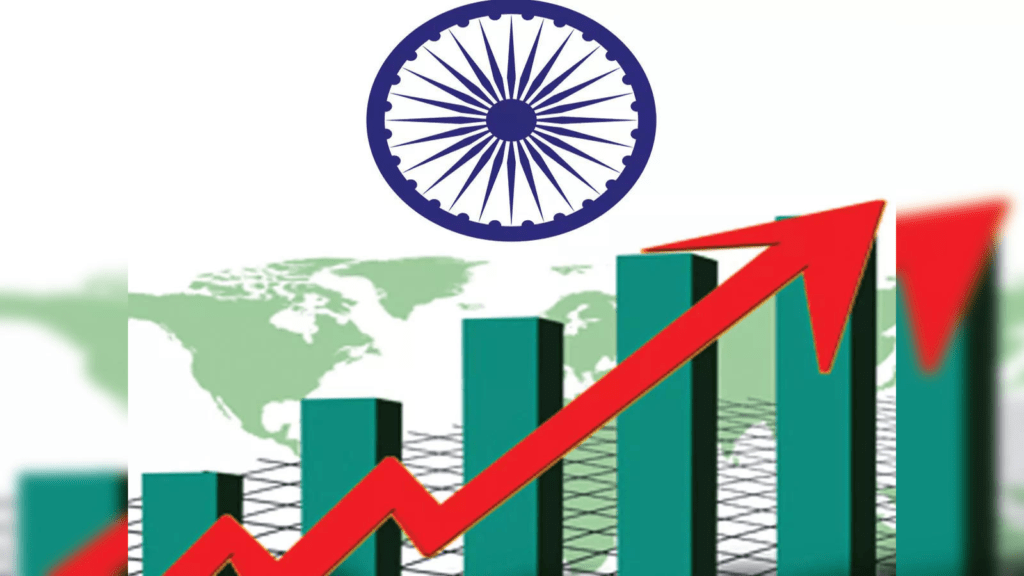The Hindu Editorial Analysis
14 October 2025
Estimating India’s Potential Growth Rate
(Source – The Hindu, International Edition – Page No. – 8)
Topic : GS Paper III – Indian Economy: Growth and Development, Inclusive Growth, Investment and Capital Formation | Essay Paper: “Balancing Growth and Stability in India’s Economic Journey”
Context
The editorial examines India’s potential growth rate — the maximum rate at which the economy can grow without triggering inflationary pressures. Recent GDP figures suggest 7.8% growth in Q1 2025–26, leading to a debate over whether India’s potential growth rate has improved beyond the earlier estimate of 6.5%.
The authors assess the sustainability of this growth through the Incremental Capital Output Ratio (ICOR) and the Gross Fixed Capital Formation (GFCF) trends, arguing that while India’s short-term growth is robust, long-term potential growth will depend on investment revival, technological progress, and structural reforms.

1. Understanding Potential Growth and ICOR
a) Definition
- Potential Growth Rate: The sustainable rate of GDP expansion consistent with stable inflation.
- ICOR (Incremental Capital Output Ratio): Measures the efficiency of capital; lower ICOR means higher productivity of investment.
b) Current Data Insights
- Average GDP growth for Q1 (2022–23 to 2024–25): 9.9%
- Q1 2025–26 growth: 7.8% — lower than the post-pandemic average, indicating cooling momentum.
- Average annual GDP growth (2022–23 to 2024–25): 7.6%, 9.2%, and 6.5% respectively.
The authors note that real GVA (Gross Value Added) in Q1 2025–26 was 7.6%, also below the earlier average of 9.5%. Much of the past high growth was recovery-driven after COVID-19 disruptions, not necessarily reflective of structural improvements.
2. Growth Drivers and Sectoral Contributions
a) Manufacturing as the Key Engine
- Growth in Q1 2025–26 manufacturing: 7.7%, higher than the previous three-year Q1 average (5.8%).
- Other high-performing sectors include transport, trade, and financial services.
However, public administration and real estate show lower growth compared to the pre-pandemic trend, indicating uneven recovery.
b) Role of Investment
- Gross Fixed Capital Formation (GFCF):
- 2022–23: 34.5% of GDP
- 2023–24: 34.6%
- 2024–25: 34.5%
GFCF has stagnated, suggesting that despite higher public investment, private capital formation remains subdued.
- To raise potential growth from 6.5% to 7.5%, the ICOR (currently around 5.2) must decline through improved investment efficiency.
3. Relationship Between GFCFR and ICOR
The GFCFR (Gross Fixed Capital Formation Ratio) and ICOR jointly determine potential output.
- If GFCFR = 33.6% of GDP and ICOR = 5.2 → potential growth ≈ 6.5%.
- To push growth to 7.5–8%, either GFCFR must rise to 34–35% or ICOR must fall through technological and productivity improvements.
Interpretation: India’s recent GDP surge is cyclical, not structural. Sustained growth will require capital deepening and total factor productivity (TFP) gains.
4. Public Investment Trends and Concerns
a) Fiscal Push
- Public capital expenditure (as % of GDP):
- 2021–22: 24.4%
- 2022–23: 28.9%
- 2023–24: 29.2%
- 2024–25: 39.4% (highest in recent years)
This increase has partially offset weak private investment, but cannot sustain high growth indefinitely without crowding-in private sector participation.
b) Private Sector Hesitation
The editorial notes persistent weakness in private capital expenditure despite fiscal incentives. Policy uncertainty, high borrowing costs, and subdued global demand have restricted private sector risk appetite.
Inference: India’s long-term growth momentum depends on reviving private sector confidence and improving ease of doing business.
5. Prospects and Challenges
a) Positive Indicators
- Rising manufacturing output and strong public investment suggest that India’s 6.5% potential growth is achievable and stable.
- Adoption of AI, Gen AI, and new technologies could raise productivity, potentially lowering ICOR.
b) Negative Forces
- High consumption-led demand without matching capital formation could lead to inflationary pressures.
- Aging capital stock and slow private investment cycles may drag productivity.
- Global uncertainty (trade protectionism, energy transition, and inflation) constrains export-led growth.
c) External Environment
- Slower global trade growth and geopolitical fragmentation (supply-chain shifts, tariffs, conflicts) limit India’s export expansion prospects.
- India’s future growth therefore hinges on domestic investment rather than export booms.
6. Policy Recommendations and the Way Forward
a) Strengthen Private Investment Climate
- Reduce regulatory bottlenecks and policy unpredictability.
- Encourage PPP-based infrastructure and sectoral incentives for manufacturing, logistics, and green energy.
b) Improve Efficiency of Capital
- Focus on technology adoption, digital infrastructure, and skills upgradation to lower ICOR.
- Channel public investment into high-multiplier sectors rather than consumption subsidies.
c) Institutional Reforms
- Enhance coordination between Centre and States to ensure efficient fiscal spending.
- Maintain fiscal prudence while promoting productive capital formation.
Conclusion
India’s economy is growing fast but below potential. While short-term GDP growth of 7.8% reflects resilience, structural reforms are needed to sustain momentum beyond the post-COVID rebound.
To truly realize an 8% sustainable growth path, India must:
- Improve investment efficiency,
- Boost private sector participation, and
- Leverage technological transformation.
In essence, the challenge is not in achieving growth — but in ensuring that it is durable, inclusive, and investment-led, rather than consumption-driven.


